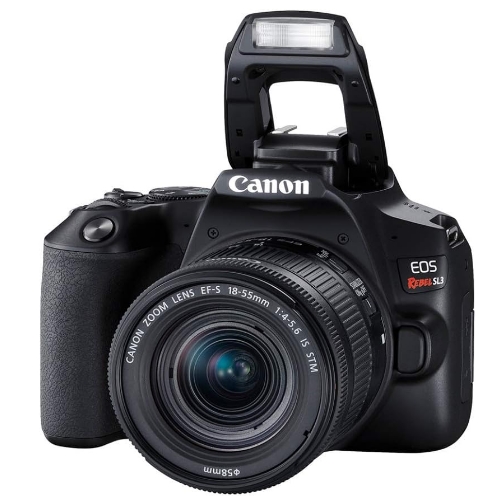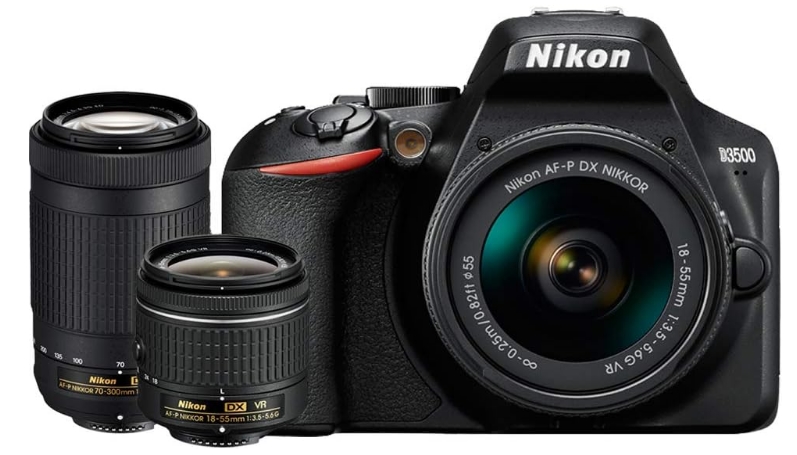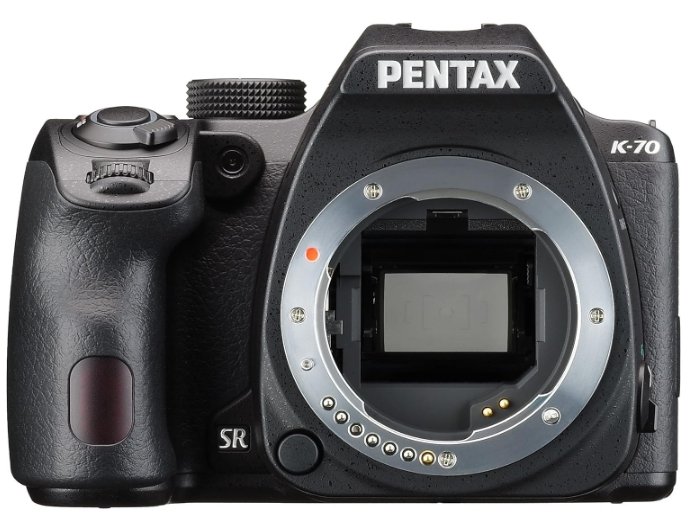If you’re looking for a way to take your photography to the next level, you might be considering getting a DSLR camera. DSLR stands for digital single-lens reflex, and it’s a type of camera that uses a mirror and a prism to direct light from the lens to the optical viewfinder. This allows you to see exactly what the camera sees, and gives you more control over the settings and the focus. DSLR cameras also have larger sensors than most point-and-shoot or smartphone cameras, which means they can capture more detail, better colors, and less noise in low-light situations.
But with so many models, features, and accessories to choose from, how do you know which DSLR camera is right for you? And how do you use it to take amazing photos? In this article, we’ll guide you through the basics of DSLR cameras for beginners, and help you find the best one for your needs and budget.
Demystifying DSLR Jargon: A Beginner’s Guide
As a novice photographer, you may feel inundated by the technical jargon surrounding DSLR cameras. From aperture and shutter speed to ISO and focal length, understanding these terms is crucial for mastering your camera. Let’s break down the essentials:
- Aperture: Often referred to as the “f-stop,” aperture controls the amount of light entering the camera lens. A lower f-stop means a larger aperture opening, resulting in a shallower depth of field and vice versa.
- Shutter Speed: Shutter speed determines the duration the camera’s shutter remains open, allowing light to reach the image sensor. Faster shutter speeds are ideal for capturing fast-moving subjects, while slower speeds create motion blur.
- ISO: ISO measures the sensitivity of the camera sensor to light. A higher ISO setting is useful in low-light conditions but may introduce digital noise to the image.
- Focal Length: Focal length refers to the distance between the lens and the image sensor, affecting the magnification and angle of view of the captured image.
By familiarizing yourself with these fundamental concepts, you’ll be better equipped to adjust your camera settings according to the shooting conditions and achieve desired results effortlessly.
What to Look for in a DSLR Camera For Beginners
When shopping for a DSLR camera, there are a few things you should pay attention to, such as:
Sensor size
The sensor is the part of the camera that captures the light and converts it into digital information. The larger the sensor, the more light it can gather, and the better the image quality. DSLR cameras typically have either APS-C or full-frame sensors. APS-C sensors are smaller and cheaper, but they also crop the image by a factor of 1.5x or 1.6x, depending on the brand. Full-frame sensors are larger and more expensive, but they also offer the best image quality, dynamic range, and low-light performance. For beginners, an APS-C sensor is usually sufficient, unless you have specific needs or a higher budget.
Megapixels
Megapixels are the number of pixels that make up the image. The more megapixels, the higher the resolution, and the more detail you can see. However, megapixels are not the only factor that determines image quality. The size and quality of the sensor, the lens, and the processing also play a role. For most purposes, a DSLR camera with 16 to 24 megapixels is enough, as long as the other factors are good. Higher megapixels also mean larger file sizes, which can take up more space and slow down your workflow.
Autofocus system
The autofocus system is the mechanism that allows the camera to focus on the subject automatically. The faster and more accurate the autofocus system, the easier it is to capture sharp and clear photos, especially of moving subjects. DSLR cameras use two types of autofocus systems: phase detection and contrast detection. Phase-detection is faster and more reliable, but it only works when using the optical viewfinder. Contrast-detection is slower and less accurate, but it works when using the live view or video mode. Some DSLR cameras have hybrid autofocus systems that combine both methods for better performance. When choosing a DSLR camera, look for one with a high number of autofocus points, a good coverage of the frame, and a fast and responsive performance.
These are some of the main factors to consider when choosing a DSLR camera for beginners, but there are also other features and specifications that you might want to look at, such as the battery life, the burst rate, the connectivity, the screen, the viewfinder, the design, and the price. To help you narrow down your options, we’ve selected some of the best DSLR cameras for beginners based on our research and testing. Here they are:
Nikon D3500: The Best DSLR Camera For Beginners
The Nikon D3500 is one of the most popular and best-selling DSLR cameras for beginners, and for good reasons. It’s easy to use, has excellent image quality, and is very affordable. It has a 24.2-megapixel APS-C sensor, a fast and accurate 11-point phase-detection autofocus system, and a long-lasting battery that can take up to 1,550 shots per charge.
It can also record full HD videos at 60 fps, with decent autofocus and audio quality. It has a 3-inch fixed LCD screen and a bright and clear optical viewfinder. It has a simple and ergonomic design, with a comfortable grip and a lightweight body. It also has a guide mode that explains the basic functions and settings of the camera, making it ideal for beginners.
The Nikon D3500 is compatible with a wide range of Nikon lenses, from the affordable kit lens to the professional-grade prime lenses. It’s a great DSLR camera for beginners who want to learn the basics of photography and take high-quality photos without breaking the bank. More info >>>
Canon EOS Rebel SL3 / EOS 250D: The Best Compact DSLR Camera For Beginners
The Canon EOS Rebel SL3, also known as the EOS 250D, is the smallest and lightest DSLR camera on the market, making it perfect for travelers and vloggers who want a portable and versatile camera. It has a 24.1-megapixel APS-C sensor, a fast and accurate 9-point phase-detection autofocus system, and a decent battery life that can take up to 1,070 shots per charge.
It can also record 4K videos at 24 fps, with good autofocus and audio quality. It has a 3-inch vari-angle touchscreen that can flip out and rotate, making it easy to shoot selfies, record vlogs, or capture photos and videos from different angles. It also has a bright and clear optical viewfinder. It has a simple and ergonomic design, with a comfortable grip and a lightweight body. It also has a creative assist mode that helps you adjust the settings and effects of the camera, making it ideal for beginners.
The Canon EOS Rebel SL3 is compatible with a wide range of Canon lenses, from the affordable kit lens to the professional-grade prime lenses. It’s a great DSLR camera for beginners who want a compact and versatile camera that can handle both stills and videos. More info >>>
Pentax K-70: The Best Weatherproof DSLR Camera For Beginners
The Pentax K-70 is a DSLR camera that stands out for its weatherproof design and durability. It has a 24.2-megapixel APS-C sensor, a fast and accurate 11-point phase-detection autofocus system, and a decent battery life that can take up to 410 shots per charge.
It can also record full HD videos at 30 fps, with decent autofocus and audio quality. It has a 3-inch vari-angle LCD screen and a bright and clear optical viewfinder. It has a simple and ergonomic design, with a comfortable grip and a lightweight body. It also has a scene mode that helps you choose the best settings for different situations, making it ideal for beginners.
The Pentax K-70 is compatible with a wide range of Pentax lenses, from the affordable kit lens to the professional-grade prime lenses. It’s a great DSLR camera for beginners who want a rugged and durable camera that can withstand harsh weather conditions and environments. More info >>>
FAQs About DSLR Camera For Beginners
Here are some of the frequently asked questions about DSLR camera for beginners, and their answers:
- What is the difference between a DSLR camera and a mirrorless camera?
A DSLR camera and a mirrorless camera are both types of digital cameras that use interchangeable lenses and have large sensors. The main difference is that a DSLR camera has a mirror and a prism inside, which direct the light from the lens to the optical viewfinder. A mirrorless camera does not have a mirror or a prism, and uses an electronic viewfinder or the LCD screen to show the image.
The advantages of a DSLR camera are that it has a better battery life, a brighter and clearer viewfinder, and a faster and more reliable autofocus system. The advantages of a mirrorless camera are that it is smaller, lighter, and quieter, and that it has a higher resolution, a wider dynamic range, and a better video quality.
- How much does a DSLR camera cost for beginners?
The cost of a DSLR camera for beginners varies depending on the brand, model, features, and accessories. Generally, a DSLR camera for beginners can range from $300 to $1000, depending on the quality and the performance. You can also save money by buying a used or refurbished DSLR camera, or by buying a bundle that includes the camera, the lens, and some accessories.
In this article, we have covered the basics of DSLR camera for beginners, and some of the best models available. We have also shared some tips and tricks on using a DSLR camera for beginners and improving your photography skills. We hope that this article has helped you understand what a DSLR camera is, how it works, and what it can do for you. We also hope that this article has inspired you to start or continue your photography journey, and to enjoy the fun and the rewards of capturing the world with a DSLR camera.
If you have any questions, comments, or feedback, please feel free to leave them below. We would love to hear from you and help you with your photography needs. Thank you for reading, and happy shooting!
[wpedon id=”353″ align=”center”]


